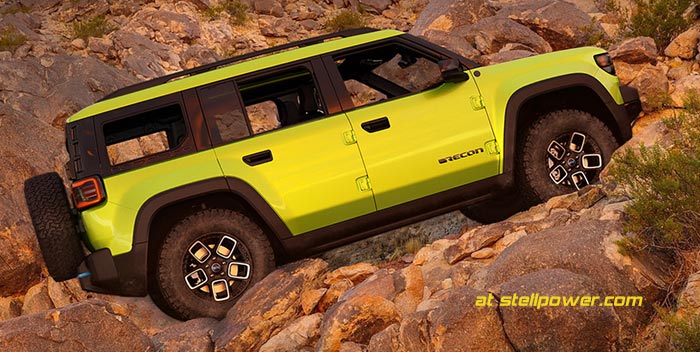Speculation. After years of reportedly putting off major expenses, FCA US (Stellantis’ United States division) closed the Belvidere plant. The power plant is still on and there are security and maintenance personnel on-site, but re-opening Belvidere will take a major investment.
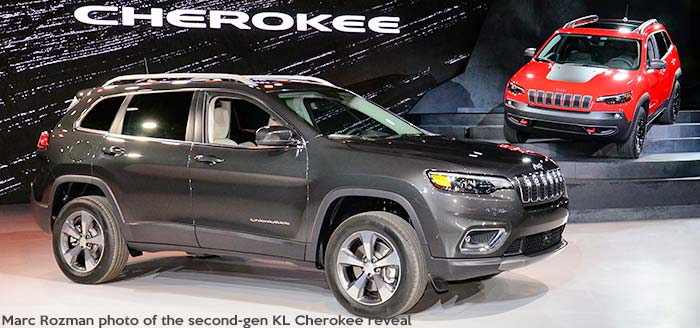
Last week we considered that the “KM” Cherokee and other STLA Medium vehicles might bring Belvidere back to life; we speculated that STLA Small and STLA Medium would have sales beyond the capability of the Toluca plant. That facility also has some issues, since it’s been needed to pump out cars continuously, so there hasn’t necessarily been much time to get all the production gear up to date. But perhaps Toluca, now that it’s only running the Compass at reasonable volumes, can handle all the Medium cars Chrysler, Dodge, and Jeep need—and perhaps they won’t be doing Small in the US at all. Here’s the logic behind these ideas.
The Stellantis EV Day presentation teased vehicles coming down the pipeline on the STLA Large platform. We’ve already seen the Chrysler Airflow, Charger Banshee, Jeep Recon, and Jeep Wagoneer S, so we know roughly what size some of these vehicles are going to be around.
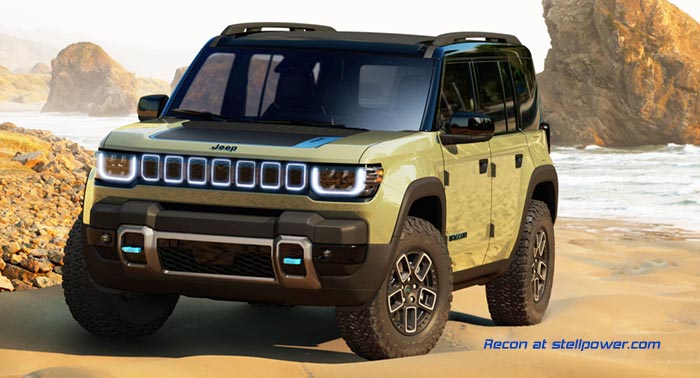
EV Day brought to light eight or nine vehicles on STLA Large—a long-range luxury sedan (300?), Charger, a two-door Cherokee replacement, the Jeep Recon, a crossover similar to the Dodge Hornet but a bit larger, a short-bed pickup, and two other SUVs [as seen at CarScoops]. The next generation ProMaster has been rumored to be on the STLA:Large platform (not Frame), too.
With regard to power, the new STLA platforms can accept full ICE, hybrid, and full BEV. Stellantis is unlikely to have many vehicles on full BEV only, given the slow ramp of EV sales and ultimate goal of having EVs as just 50% of sales in 2030.
Stellantis has also just dumped a lot of money into the Hurricane; and the ZF 8-speed has been upgraded to be a hybrid transmission. Tim Kuniskis dropped the hint that Dodge hasn’t totally lifted the curtain on the Charger and Challenger yet; there is more coming. We’re already seeing a hybrid 3.0L Nettuno setup in Stellantis’ European cars; the same technology may be coming to the Hurricane engines for STLA Large.
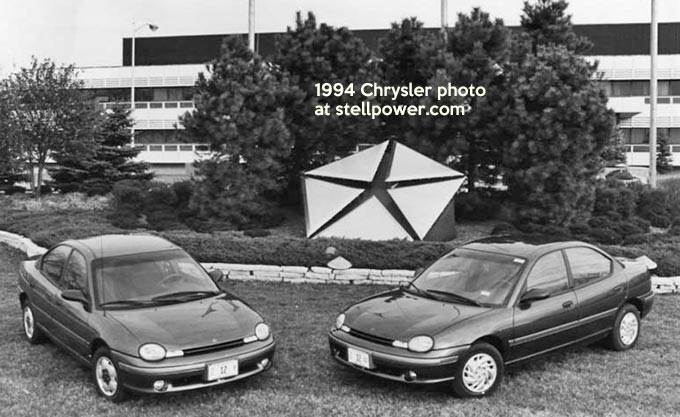
Now, does Former Chrysler even need STLA Medium? Let’s consider:
Size. Large vehicles have an overall length from 185 inches to 212.6 inches. The Ford Mustang and Chevy Camaro are both around 189 inches long; the 200 sedan was around 192 inches, while the Charger reached around 200 inches. That envelope would also include the Dodge Durango, Chrysler Town & Country, Ford Maverick, Hyundai Santa Cruz, and Ford Ranger. There are outliers—the Jeep Cherokee only hit 183 inches while the ProMaster goes up to 236 inches. Still, a new Cherokee could reach 185 inches.
Based on length alone, the STLA Large could fit just about all Mopars from the past ten years save for Renegade/Compass, Cherokee, and Dart. If they could make them all in the same plants, it would save a great deal of cash for both setup and production—since varying sales levels would not matter nearly so much. Fiat did not really use Chrysler’s flex manufacturing capability; Stellantis almost certainly will.
What about the smaller cars, such as the Jeep Compass? Those are encompassed by the STLA Medium platform, but for the moment, demand seems fairly slack—and the plant most likely to be converted to STLA Medium is Toluca.
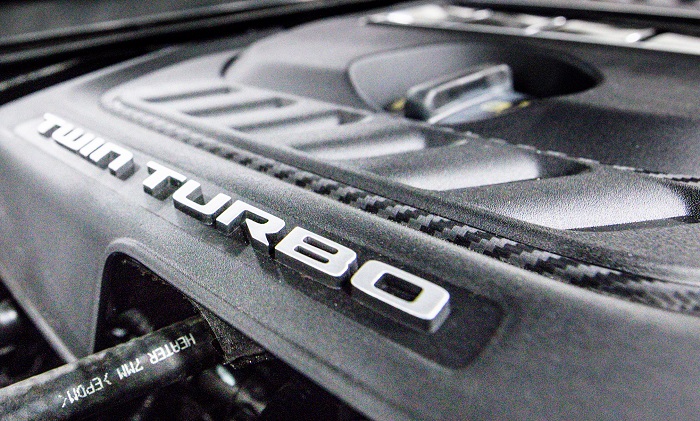
Powertrain. Outside of EVs, with or without hybrid engines, only one transmission is needed: the ZF eight-speed, as modified and built by Former Chrysler. There are some variations, but most of the hardware is identical and the programming is similar. If the company standardized on this setup, in AWD where needed, they would need any of the front drive transaxles. The eight-speed powers supercars as well as grocery getters. Excluding the front drive hardware would simplify inventories and engineering quite a bit; any vehicles absolutely needing FWD could have those parts engineered and made in Europe, where they will still be used for the foreseeable future. In addition, every Hurricane engine, from the 2.0 up, is more powerful than the 5.7 engine. The 6.4 can be beaten already by the 3.0 I-6; a hybrid system could at least match the 6.2 Hellcat.
It is important to note that Stellantis is investing in U.S. production of a Peugeot 1.6 liter engine, to be used as part of a hybrid system, in the United States, so STLA Medium is bound to be brought to these shores.
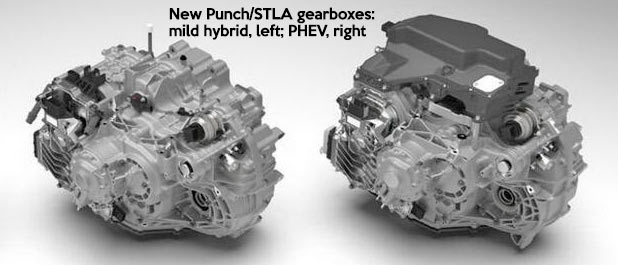
These two arguments suggest that Stellantis could, in theory, use STLA Large and Frame for nearly all its North American vehicles. While it would be a shame for the auto workers and community, they could theoretically shut down Belvidere, use Toluca for Compass and its spinoffs, and import anything else from European factories which specialize in STLA Small and Medium. (Technically, they could also drop Toluca, which has a variety of different automation technologies, and centralize Compass and STLA Medium in Belvidere—but to take advantage of Illinois tax breaks, they’d have to be all-EV. Another option would be small production of STLA Medium EVs in Belvidere and gasoline cars in Toluca. Would this pay? Would there be enough demand for two factories? It’s a gamble few executives would want to take. The all-electric rule for Illinois tax benefits also hurts chances for the idea of moving at least some trucks from Warren or Saltillo to Belvidere.)
All of this would let FCA US stay what it is right now, while being more EPA friendly, more streamlined, and more diverse than they are now, even with most of their production coming from two platforms. Let Europe keep the STLA Small; we have no real demand for that here. Let Jeep use STLA Medium from its current Compass base in Toluca and its Renegade outpost in Europe. Even if Dodge or Chrysler went after cars like the Corolla, Civic, or Trax, Medium could easily do it from its single American factory and overflow from Europe. FCA US can capitalize on most of the market, and save a great deal of money by sticking to two platforms for the North American market and calling it a day.
